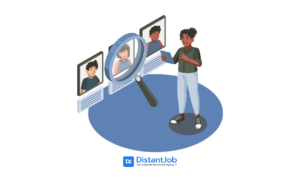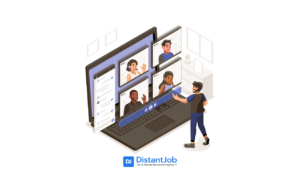Only recently, the world started to acknowledge the impact of mental illness on society. In the past, mental health was considered to be ‘’all in your heard’’. Nowadays, the healthcare industry has realized how drastically psychological disorders affect the lives of those who suffered from them. Not only their personal lives but also their professional careers.
One of the major Trauma and Stressor-Related Disorders occurring with increasing frequency is PTSD, or “Post-traumatic Stress Disorder.” PTSD typically occurs after a person experiences a traumatic event; examples can be varied and include such events as military combat, natural disasters, physical or sexual assault, or major accidents.
Overall, PTSD affects around 3.5% of the U.S. population, approximately 8 million americans. Sufferers from PTSD struggle with flashbacks, nightmares, and triggers from otherwise benign things. Such symptoms often make it difficult, if not impossible, for them to lead normal, healthy lives.
As a result, those with PTSD are often not able to hold down employment.
With the rise in popularity of remote work and the technology to make it more efficient, an answer is on the horizon. Virtual positions are increasing as companies are starting to see all the benefits. And this highly benefits people who have PTSD because they have the opportunity to work in their own environment.
When hiring people with PTSD, the key for companies is to understand the person suffering it and how to support them when episodes occur. And when you are ready to build a remote team, get in touch with DistantJob, and we’ll help you out!
Remote Work Option for People With PTSD
People with PTSD suffer from a number of psychological and physical symptoms. These symptoms vary from person to person but often include:
- Dizziness.
- Sleep disturbances.
- Depression.
- Panic disorder.
On top of that, many otherwise common occurrences can trigger their PTSD. It can be anything from a car backfiring to the smell of someone’s cologne; any person, place, or thing can set someone off, depending on that person’s particular trauma.
According to PTSD.gov, “people with PTSD have more unemployment, divorce or separation, spouse abuse and a chance of being fired than people without PTSD.” Both their personal life and their professional life are at risk because of this debilitating disorder.
For a clearer picture, here is a list of common triggers for those with PTSD. According to confinedtosuccess:
- High-stress situations.
- Big crowds/excessive noises.
- Unnatural light.
- Abundant human contact.
- Strict work environment.
- Fixed schedule.
- Limited emergency exits.
- Unsafe work neighborhood.
With this type of criteria, the right job can seem almost nonexistent. That’s where remote employment comes in. With the ability to work remotely, someone with PTSD can maintain complete control of their work environment, thereby minimizing disturbances and triggers which could potentially disrupt their day-to-day work responsibilities.
Obviously, remote work is not limited to only those people suffering from PTSD; individuals with other types of mental and physical disorders can benefit from remote work, as well.
Remote Recruiting With PTSD
According to Nancy B. Adams, branch chief at the U.S. Army Warrior Transition Command (as told to Fortune.com), “there’s a stigma attached to PTSD and traumatic brain injury and other hidden disabilities that people may assume soldiers have when they’re leaving the military … such trauma may be addressed through simple steps, such as rearranging a desk chair to face the door.” A lot of companies have a fear of dealing with someone with PTSD and their symptoms.
In a study done by the American Psychiatric Association, two-thirds of PTSD sufferers are unemployed, including sufferers without a military background, despite discrimination laws being in place.
As Task & Purpose points out, “if you are nervous about hiring someone with PTSD, then you should be nervous about candidates with depression, anxiety issues, attention deficit disorder, bipolar disorder, and more.” In her interview with Fortune, Ms. Adams went on to mention that people with PTSD may need extra consideration to help them feel at ease in their surroundings.
However, with remote recruitment, the physical environment is completely up to the worker and as a result, managers no longer need to worry about providing an ideal work environment.
Remote recruiting also eliminates the need for real estate for the company, which saves a considerable amount of money for companies who are able to hire remote employees. We mentioned in a previous article, How Remote Workers Save Companies Money, that businesses can save as much as $10,000 per year per remote employee, just in real estate costs.
The Benefits Of Remote Recruitment
Hiring remotely is the perfect solution for companies facing shortages of local talent, significant real estate expenses, or high employee turnover. And work from home positions for people with PTSD can be the perfect solution for them. As a remote worker, they are in complete control of their environment, helping them limit exposure to potential triggers. Not only can they work in an atmosphere that allows them to perform at their best, but it also provides employment to an individual who would otherwise be unable to perform in a traditional office setting.
Companies that embrace remote work and hire employees who struggle with PTSD (and other mental health concerns) enjoy the increasing benefits of remote teams.
As a manager of a remote team, it’s important to be aware of everyone’s needs, including those with mental disorders.
Many sufferers of PTSD feel embarrassed to ask for help. It may often be up to you as a manager to take the initiative and ask your employees how you and the other members of your team may provide support. When communicating with them, pay close attention to both what they say and how they say it. If they are more comfortable writing an email, send an email. For those who prefer verbal communication, make sure you do not interrupt them when they do start to speak about their issues and concerns, as this could impede their willingness to discuss these topics in the future.
At the end of the day, employees with PTSD are trying to make a living like everyone else. But, with the added burden of what is often extreme inner turmoil at the same time. However, nowadays, with remote recruitment, people suffering from this disorder have the flexibility of a remote job and a manager who communicates with them, making a world of difference. And for someone with PTSD, that difference may mean the world.





